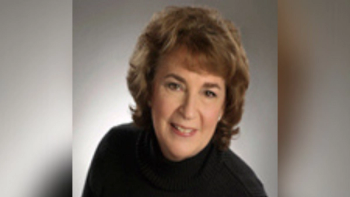
Expanding Clinical Trial Diversity Amid Social Injustice
Amy Davis, Sr. Director of Clinical Development Oncology at Eli Lilly, discusses her perspectives on diversity in clinical trials and the workplace.
Since the beginning of civilization, social injustice has plagued humanity and will continue to infiltrate many situations and institutions. The biopharmaceutical industry and many others have been combating social injustice by employing initiatives to include diversity in the workplace. However, driven by recent events, there has been an increasing focus on publicizing diversity in clinical trials—not only because of social injustice but also because of medical necessity. In this interview, Amy Davis, Sr. Director of Clinical Development Oncology at Eli Lilly, will discuss her perspectives on the topic.
Moe Alsumidaie: Can you discuss how COVID-19 has impacted minority inclusion in clinical trials?
Amy Davis: The pandemic has further exposed the persistent health disparities in clinical trials that disproportionately impact black Americans and other racial and minority groups. At Lilly, we are continuing to heighten our focus on this issue to ensure we’re doing everything we can to continue identifying and reducing barriers while increasing enrollment of racially and ethnically diverse patients.
A key pillar in our diversity enhancement plan is to create clinical trial strategies that reach diverse patient populations across many therapeutic areas to ensure that patient participants match the composition of the U.S. population. Next, we’re working to intentionally select a diverse range of trial sites and investigators to ensure that we have more women and racial and ethnic minority populations in our investigator groups. We’re also looking to increase our diverse representation through partnership and collaboration with patient groups, regulatory agencies, healthcare providers, etc. And finally, Lilly is looking at trial designs both within inclusion-exclusion criteria and allowing for more virtual and decentralized trial visits. While these decentralized capabilities were initially launched as a solution to continuing trials amid the pandemic, these flexibilities may also allow us to reach minority patients more effectively.
MA: Can you speak to how Lilly is applying this plan to oncology in particular?
AD: When Lilly did a retrospective analysis of our US trials, over the last 12,000 patients, 39% of those patients were minority patients, roughly about the same number as the US population. But when you dig into those numbers, you’re going to see higher percentages in areas like diabetes, which isn’t necessarily surprising because diabetes is more common amongst minorities. But we haven’t done as well in areas such as oncology.
We know that the mortality rate for African-American women diagnosed with breast cancer is 40% higher than that of white women. As we’re starting to think about our next wave of breast cancer studies, there are several things that Lilly is putting in place. One is conducting an African-American Oncology patient journey to better understand barriers to entering trials. The second thing we’ve done is a partner with advocacy groups that support women of color with breast cancer. We’ve also reviewed our protocol design to ensure that we aren’t inadvertently excluding women of color. Through technology, Lilly is also enhancing our knowledge of patients’ diversity being screened at trial sites. This will enable us to understand better which patients sites are screening and why they’re screening out of our trials. So those are some very intentional things that we’re implementing now with our upcoming breast cancer studies.
MA: There seems to be much misinformation going around on social media that patients essentially start to believe about clinical research. What is Lilly doing to combat misinformation?
AD: First and foremost, you have to understand the issues at the root of this mistrust. Look at the Tuskegee experiments as one example. We are working with patient and advocacy groups to understand better the driving forces leading patients to form these opinions and ensure we are doing everything we can to address that and build trust.
One of the things we enacted in our COVID trials was a more intentional use of imagery in our recruiting campaigns. Not only were racially and ethnically diverse individuals seeing patients like themselves in our clinical trial education materials, but we were also engaging with community clinics and urgent care locations to help provide educational materials where underrepresented patient populations seek treatment and information. Presenting educational and factual information in the appropriate settings helps build the trust required to combat misinformation about clinical trials.
MA: Why is diversity important in clinical trials?
AD: We know that people respond differently to medicines based on sex, race, ethnicity, and other factors, so including diverse representation in our trials ensures we’re making medicines that will be as effective as possible for all patients that need them. And that’s been our goal, not just recently, but for more than a decade with the work we’ve done to increase diversity within our trials.
MA: There’s been a lot of recent change and polarization in the country, spurring many new social justice initiatives. Is Lilly in any way involved? Or what are your thoughts on Lilly’s involvement with these new social justice initiatives?
AD: Racial and ethnic inequalities in the US and many other countries are enduring issues that impact us all. Lilly certainly has a responsibility as a significant employer to take action on issues that affect our employees, business, and communities. In 2020, Lilly launched a racial justice initiative that focused on existing and new diversity work within Lilly and our communities. This is a multi-pronged approach. It includes expanding diversity in Lilly’s clinical trial programs, which I’m helping to lead company-wide, joining forces with other major companies to hire, train and advance African-Americans into 1 million family-sustaining jobs through our partnership with the OneTen coalition, doubling our spend with diverse suppliers and building and strengthening our existing community and national partnerships to help drive social change.
MA: You’ve been with Lily for over 20 years; how has your journey and perspective of the clinical trials industry changed regarding diversity?
AD: I’ve worked in many roles, some that have been closer to clinical trials and some in other areas of project/portfolio management and integrated drug development. For over a decade, Lilly has focused on improving clinical trials’ diversity, but there’s more work to be done. I think the COVID pandemic, along with just looking at our data, has shown us that we weren’t where we needed to be despite our best efforts.
In the work I do now, I lead individuals that manage the development and execution of our Oncology clinical trials, so I get to personally see the direct impact that collaborating with some of these external patient and advocacy groups has on our Oncology work. It’s exciting that there’s even more momentum within the advocacy space, the regulatory space, and across pharma. COVID made us all a little bit more creative in how we implemented our clinical trials, like the push for more decentralization which could help enhance trial diversity. I’m looking forward to the progress we will make over the next few years, and I think you’re going to notice significant improvement across the industry.
Moe Alsumidaie, MBA, MSF, is a thought leader and expert in the application of business analytics toward clinical trials, and Editorial Advisory Board member for and regular contributor to Applied Clinical Trials.
Newsletter
Stay current in clinical research with Applied Clinical Trials, providing expert insights, regulatory updates, and practical strategies for successful clinical trial design and execution.




